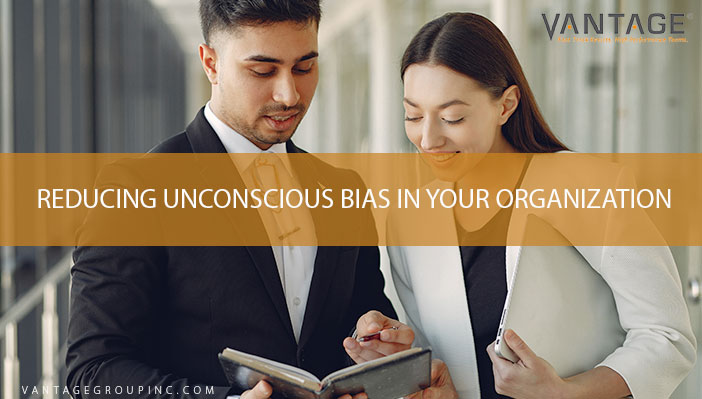Do you struggle to create a level playing field for your talent? Have you struggled to attract and retain diverse talent within your organization? When you do bring diverse talent in, do they quickly find themselves hitting a ceiling and lacking growth opportunities?
Now more than ever, organizations are becoming aware of the issues related to subjectivity and bias that have crept into talent-related decisions for their business. Whether it’s recruiting, hiring, development or internal promotions, subjectivity and bias are typically found in the decision-making process for the entire talent life cycle. Often, there is no accountability for those who make these decisions to address these unacceptable problems.
It’s common for us to see companies make hiring decisions based on “gut feelings” and promotions being handled using likability as a factor. They lean on what they’ve known, what feels comfortable and what they think they need versus what is actually needed. These tendencies, in addition to many others, are all examples of an unconscious bias.
These “gut feeling” decisions often result in bad hires, regrets on promotions, costly retention issues and discrimination. Organizations that are looking to reduce these issues need to take critical steps to move in that direction. Becoming aware of the unconscious biases that may be part of your organization to prevent hiring mistakes and retaining employees is just the beginning.
Implementing consistent, actionable procedures and tools that create an objective lens to support talent-related decisions is critical. Doing so will help reduce these biases and create the appropriate accountability measures that helps your organization build a more diverse and inclusive workplace.
Before we move on to talking about how you can create that objective lens, we need to first talk about what bias means.
What is Unconscious Bias?
Unconscious bias is the underlying attitudes and stereotypes people unconsciously attribute to another person or group of people that affect how they understand and engage with a person or group. It may be surprising to know that there are 12 common forms of bias. These include:
- Affinity bias
- Confirmation bias
- Attribution bias
- Conformity bias
- Halo bias
- Horn bias
- Contrast bias
- Gender bias
- Age bias
- Name bias
- Beauty bias
- Height bias
This is a first in a series of blogs we will be sharing that define these 12 forms of unconscious bias found in the workplace and tips you can use to avoid them when hiring and promoting employees. With this knowledge it is our hope it will help your team kickstart or expand upon your current diversity and inclusion initiatives.
Affinity Bias
Also known as similarity bias, affinity bias is the tendency of people to connect with others who share similar interests, experiences and backgrounds. This is one of the most common forms of bias and often results in selecting candidates who share your same race, gender, school, language or reminds us of ourselves. This particular bias is widespread in hiring and promotions and is usually hidden in efforts to align people to the culture of an organization. When hiring managers meet candidates that share similar interests or backgrounds, they have a tendency to move them to the head of the line in hiring or promotion decisions.
To avoid affinity bias, first, you must become aware of this. Name similarities you share with candidates and then use that to differentiate between those attributes that can cloud your judgement. It is also important to establish a benchmark of skills, behaviors, competencies and unique qualities that can become culture additions rather than culture assimilation. Identify your organization’s biases, then use data instead of feelings to make your decisions. The data you can rely on resides in job benchmarks, and assessments that align with the needs of the position and a consistently applied hiring process that ensures accountability to the facts and not to feelings.
Confirmation Bias
Confirmation bias usually occurs very early in the hiring process. People draw conclusions about a candidate based on something in their resume that can be inconsequential such as their name, where they’re from, where they went to school and types of work experience. Even if a candidate makes it past the resume review, hiring managers may carry this bias all the way through the interview process and result in questions that lead or steer a candidate down a path the hiring manager prefers.
This can also go beyond the resume and can be manifested in hiring or promoting only candidates that have come from elite universities or share the same social networks the organization typically relies on. Additionally, organizations that rely too much on social networks and personal connections exclude people with different backgrounds.
Matching internal candidates to a benchmark removes the subjective evaluation of a person’s skills. Managers must also be motivated to be accountable for anti-discrimination policies and the need to sponsor workers across gender and racial lines. This can be done through mentoring programs that provide someone that can actively champion individuals throughout the organization.
In our next blog, we will look at attribution, conformity and halo biases.
Do you already know you need assistance in reducing bias and subjectivity in your organization? Has your company made statements to reduce bias but doesn’t know how to put its words in action?

